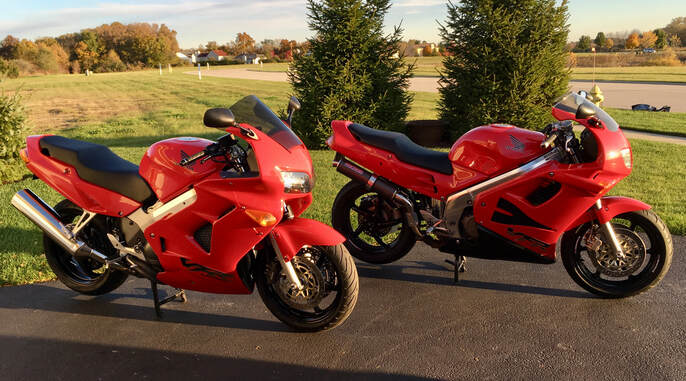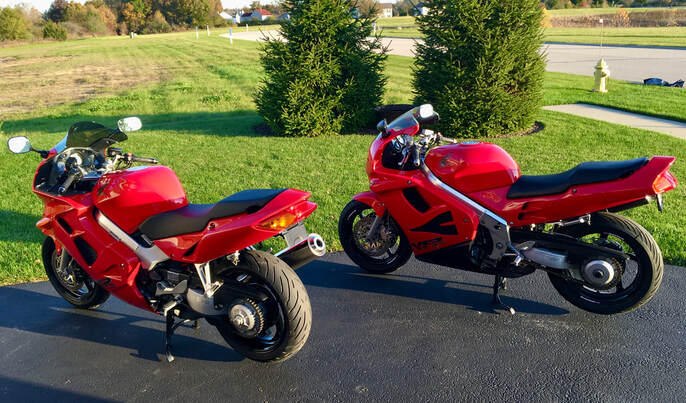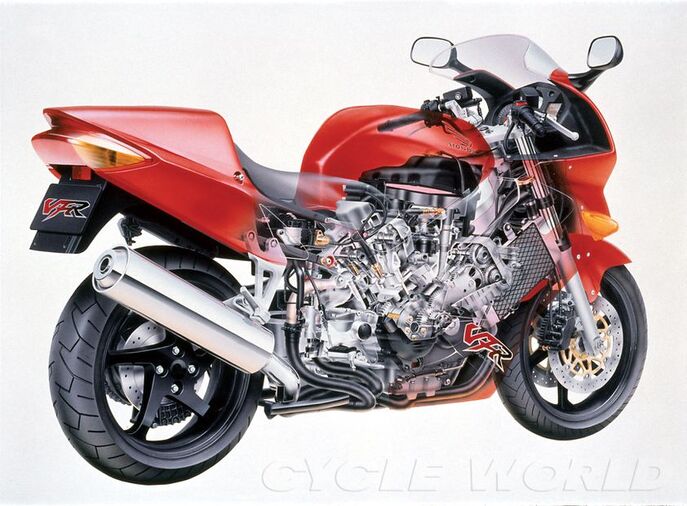The engine left its comfortable 750cc niche and, thanks to slightly larger bores and shorter stroke, the displacement now totaled 781cc. Lighter crankshaft, heads and even cylinder liners shaved five pounds from the old 750 mill, with power up a few horses thanks to a bit of a compression boost. The iconic gear-driven cams were moved to the right side of the engine, a trick taken from the RC45's playbook. But the big news in the engine department was the addition of fuel injection, only the third Honda motorbike to get the upgrade (the '85 Gold Wing Limited Edition and the RC45 were the first).
The chassis was all new, featuring a shorter wheelbase made possible by changing the single front-mounted radiator of old to two side-mounted rads. The single-sided swingarm was now bolted directly to the engine, which also featured new "variable stiffness" motor mounts. The whole affair weighed in at eight pounds less than before. Suspension was a bit stiffer and the shock now featured adjustable rebound damping.
Honda had also developed a linked braking system which actually worked well in the real world. The fairing was refined, Honda claiming nine-percent lower drag, and painted up in "Italian Red." The 2000 models got a one-year only "Pearl Shining Yellow." One more bit of fifth-gen trivia; the Interceptor name returned to the model. The 1998 bike retailed for $9500, only $200 more than the previous model.
The VFR Interceptor had officially reached middle age. It had shrugged off its cc-class connection. going boldly into its own mid-sized niche, and would appeal to an older, more sensible, more experienced rider. For a fairly comprehensive look at the 1998 remake of the VFR, click here for a Sport Rider article.
Here's a few views of a 1998 VFR800 FI (left) and a 1995 VFR750F (right)....



 RSS Feed
RSS Feed